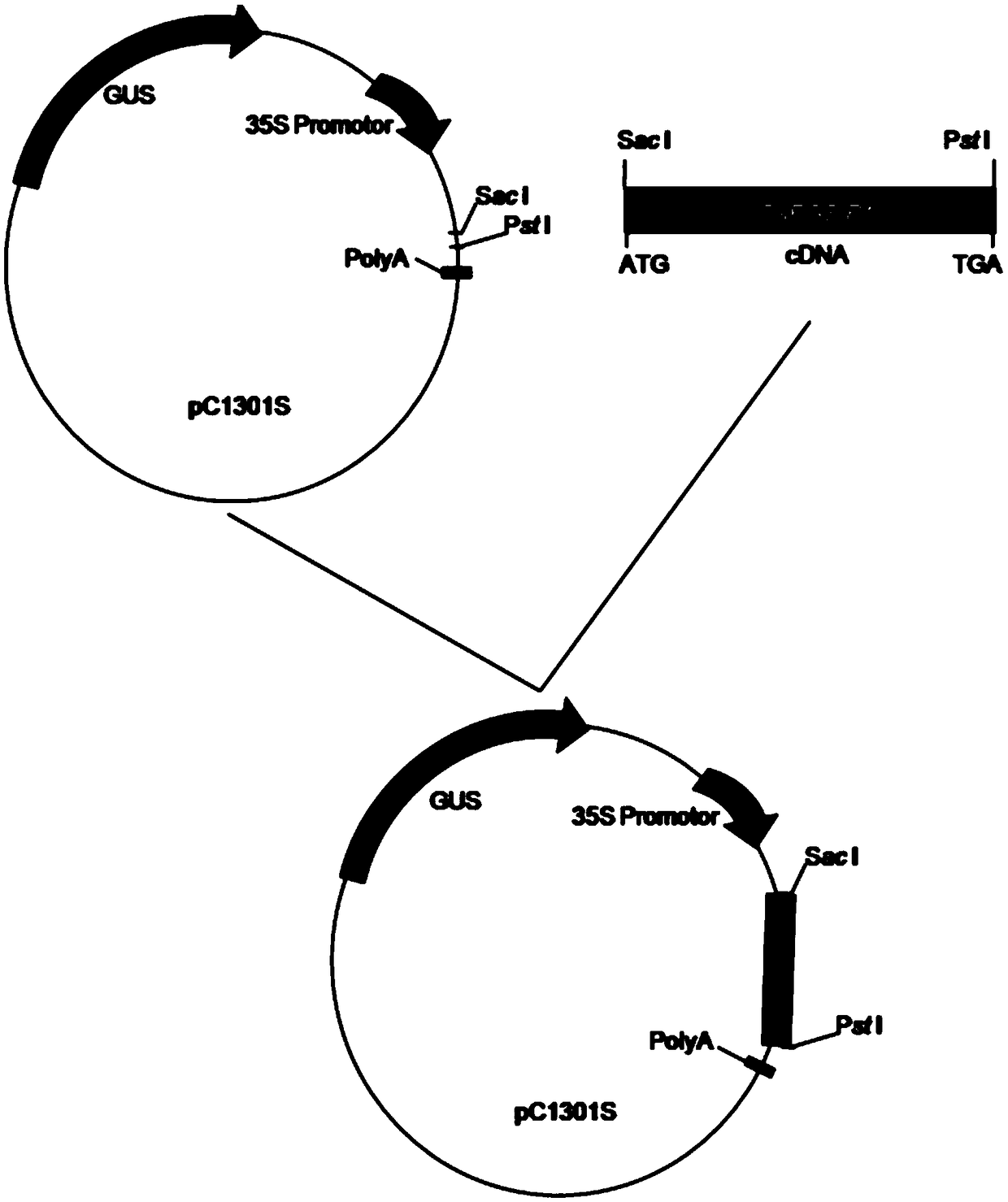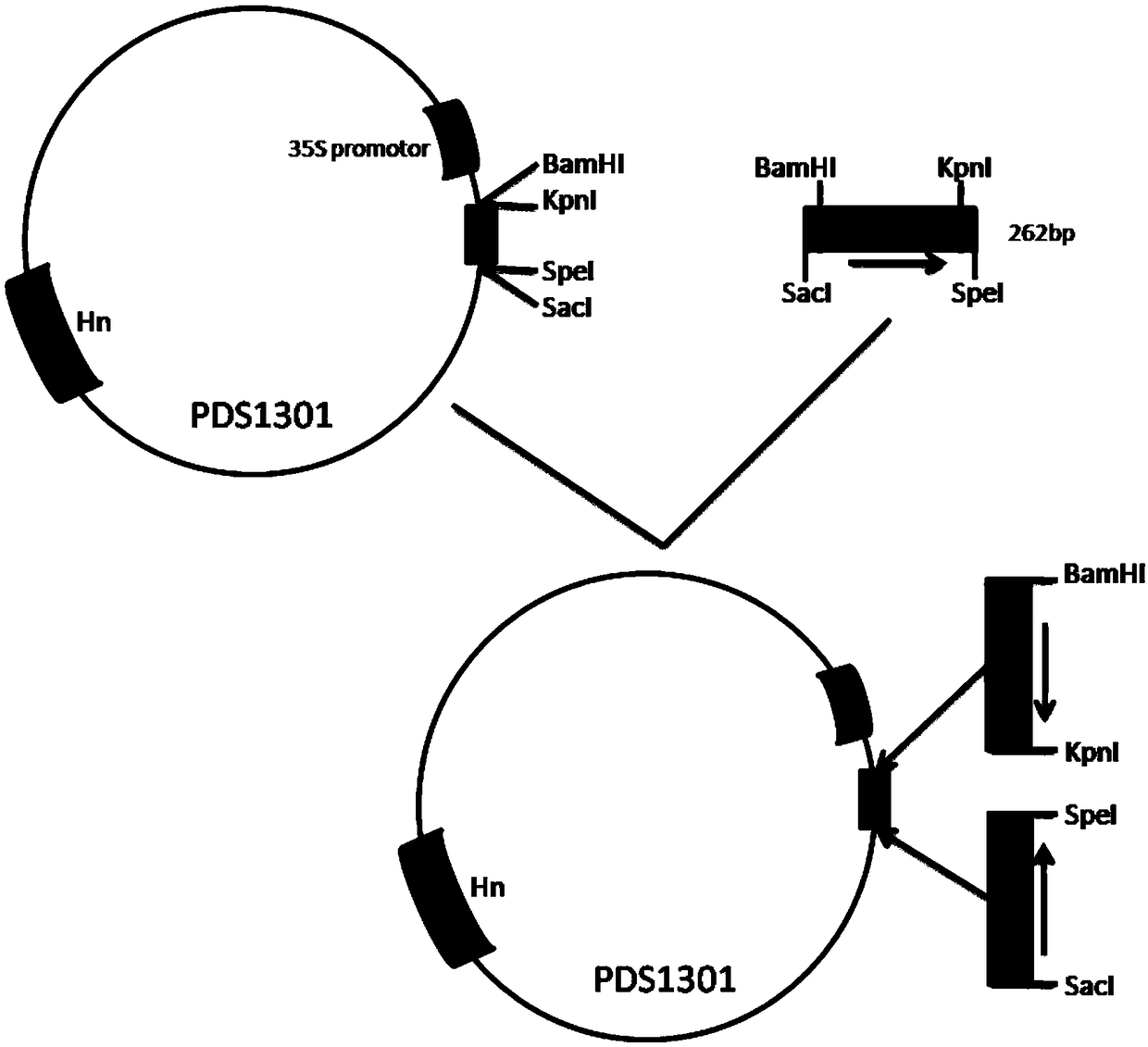Rice gene OsPGSIP1 and application thereof
A rice and genetic technology, applied in the field of genetic engineering, can solve the problems of low production efficiency, excessive application of nitrogen fertilizer, environmental pollution, etc., and achieve the goal of increasing chlorophyll and nitrogen content, increasing the mechanical strength of stems, and increasing the biomass of seedlings Effect
- Summary
- Abstract
- Description
- Claims
- Application Information
AI Technical Summary
Problems solved by technology
Method used
Image
Examples
Embodiment 1
[0129] The cloning of embodiment 1 gene OsPGSIP1:
[0130] (1) Extract the DNA of the rice public variety Zhenshan 97 maintainer line (ZS97B) (purchased from the China Rice Research Institute), and polymerize with primers (primer sequences are 5'-GGGAAATTGCCATCCCTAGT-3' and 5'-AATGGGGCTCATCACTTGAG-3') Enzyme chain reaction (PCR), the obtained PCR product is sequenced to obtain the gene sequence of the rice gene OsPGSIP1, which consists of 10263 bases, and the nucleotide sequence shown is SEQ ID NO.1. PCR program: pre-denaturation at 94°C for 5 minutes; 35 cycles (denaturation at 94°C for 30 seconds; annealing at 55°C for 30 seconds; extension at 72°C for 10 minutes), and extension at 72°C for 5 minutes.
[0131](2) extract the RNA of rice ZS97B seedling stage leaves, reverse transcribe into cDNA, and carry out polymerase chain reaction (PCR) with primers (primer sequence: 5'-aaaGAGCTCctcgcagagaacgaaagagagtccc-3' and 5'-aaaCTGCAGatctggtatagggctatctacacat-3') , the obtained PCR...
Embodiment 2
[0134] Embodiment 2: the construction of recombinant vector and the establishment of transformed Agrobacterium:
[0135] (1) if figure 1 As shown (the cDNA of the gene OsPGSIP1 is connected to the expression vector pC1301S to form an overexpression recombinant vector), the cDNA obtained in Example 1 (shown in SEQ ID NO.2) is digested with SacI and PstI, and the target product is separated and recovered. The pC1301S vector (Mao et al., 2010) digested with SacI and PstI was ligated with T4 ligase to form an overexpression vector. The above primers were synthesized by Shanghai Sangon, and the restriction enzymes SacI, PstI and T4 ligase were purchased from Takara Company;
[0136] (2) According to figure 2 The technical route, the CDS that embodiment 1 obtains uses primer (primer sequence is:
[0137] 5'-aaaGAGCTCGGATCCtgctgaccccaccaatcctctat-3' and
[0138] 5'-aaaACTAGTGGTACCacttgtgaggctcgcggtaggt-3') by polymerase chain reaction (PCR) to obtain a 403-base cDNA fragment of ...
Embodiment 3
[0142] Example 3: Agrobacterium-mediated genetic transformation:
[0143] (1) Induction: the mature rice Zhenshan 97 maintainer line (ZS97B) (purchased from China Rice Research Institute) seeds were shelled, and then treated with 70% ethanol by volume for 1 minute, and 0.15% concentration of mercuric chloride ( HgCl 2 ) seed surface disinfection for 15-20 minutes; wash the seeds 6-8 times with sterilized water; place 8-10 seeds evenly on the indica rice induction medium; place the inoculated medium in a dark place for 5 weeks at a temperature of 25 ±1°C.
[0144] (2) Subculture: select pale yellow, compact, relatively dry, and vigorous embryogenic calli, and place them on an indica subculture medium for 20 days in the dark at a temperature of 25±1°C.
[0145] (3) Pre-cultivation: select compact and relatively dry embryogenic calli, put them on an indica rice pre-cultivation medium and culture them in the dark for 4-5 days at a temperature of 25±1°C.
[0146] (4) Agrobacteri...
PUM
 Login to View More
Login to View More Abstract
Description
Claims
Application Information
 Login to View More
Login to View More - R&D
- Intellectual Property
- Life Sciences
- Materials
- Tech Scout
- Unparalleled Data Quality
- Higher Quality Content
- 60% Fewer Hallucinations
Browse by: Latest US Patents, China's latest patents, Technical Efficacy Thesaurus, Application Domain, Technology Topic, Popular Technical Reports.
© 2025 PatSnap. All rights reserved.Legal|Privacy policy|Modern Slavery Act Transparency Statement|Sitemap|About US| Contact US: help@patsnap.com



